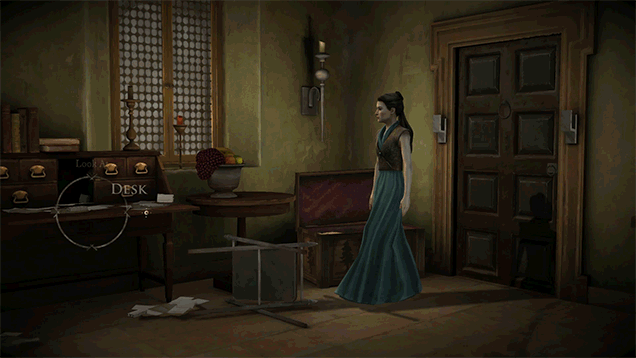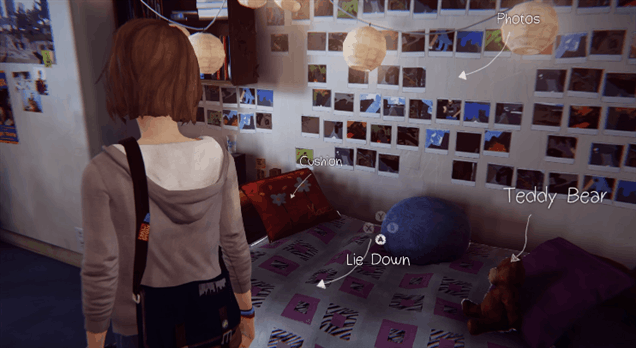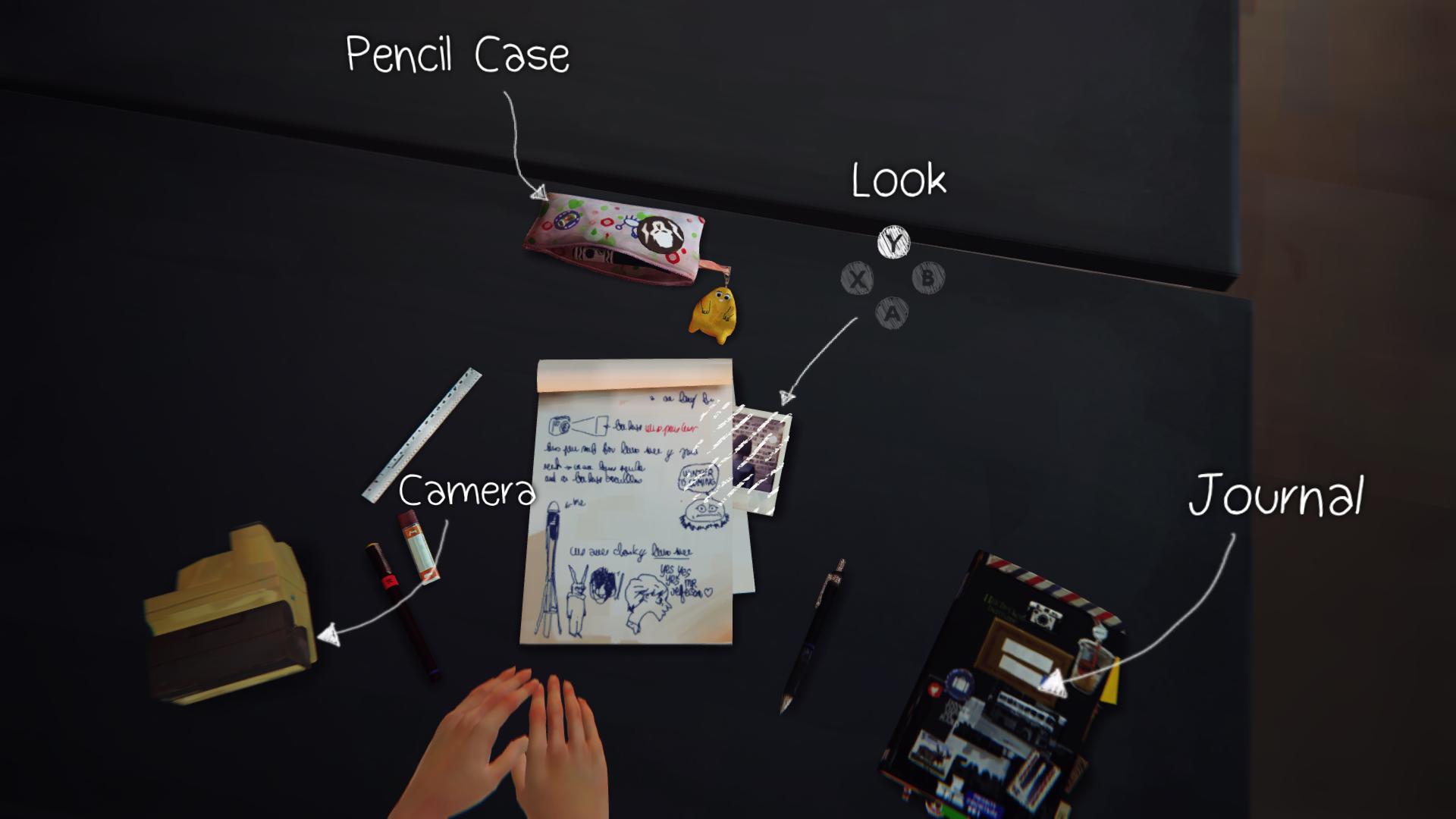There was a time when “Telltale” was just a game studio. But over the last few years, fuelled by the success of 2012 Game of the Year contender
The Walking Dead, it’s become shorthand for a whole genre. That genre is in desperate need of a viable competitor to spur Telltale to fix some annoying, perennial flaws.
Call it the modern adventure game, call it a Difficult Decision Simulator. Games like Telltale’s The Walking Dead, The Wolf Among Us, and more recently Tales from the Borderlands and Game of Thrones have become a genre unto themselves. It’s even commonly referred to as the “Telltale-style adventure game.”
Most people know what that shorthand entails, since all of those games have a few things in common. They’re all “adventure games” in that they’re mostly about solving puzzles and having conversations. They’re all played in third person. They all have branching storylines where your decisions affect things that happen in later episodes.
Wouldn’t it be great if some other game could come along, take a similar formula, and do cool things with it? Maybe shake up Telltale’s central assumptions and remind us of all the ways that Telltale games could improve? Oh hey wait! A game like that totally just came out! It’s called Life is Strange.

Life is Strange is — stop me if you’ve heard this — an episodic adventure game where your choices affect how the story unfolds. It’s made by Dontnod Entertainment, the studio behind the flawed but cool action game Remember Me. It takes that game’s neatest idea — the protagonist could hack into peoples’ brains and “remix” their memories to fit her will — and repurposes it as a central mechanic in a more grounded setting.
Kotaku UK‘s Keza MacDonald already wrote up her impressions of the first episode last week. That article was what initially got me interested in playing, and I’m glad I did.
It does have issues, several of which Keza outlined. While it’s generally nice-looking, the lip-synching is often bizarre, as Patrick already noted. The writing is this weird mix of compelling and awful, and its teenage cast talk less in actual American teen-speak and more in some weird amalgamation of dated internet-speak and dad-talk. (Note to Life is Strange writers: No one says “hella” or “phat” anymore!) (Note: OK, yes, people do still say “hella.” However, they do not say “hella” like Chloe says “hella” in this game.) Like last year’s Beyond: Two Souls, it’s a story about a supernatural American teenage girl written by an adult dude or dudes; the games have a lot in common, both for good and for ill, and I can’t shake the feeling that that’s a big part of why.
I liked how Rock, Paper Shotgun‘s Philippa Warr fondly describes the game: She calls it reminiscent of a particular type of teenage fiction, “authored by people flexing their fledgling writing muscles within a framework of tropes. Taking them as a bundle they shared an oversaturated earnestness, like emotion could be achieved or amplified through a cocktail of adjectives and pathetic fallacy.” It’s like that. In a mostly good way.
So: Cool game, iffy writing, loaded with tropes, dorky and loveable despite that.
More relevant to the purposes of this article, Life is Strange also does several things better than Telltale’s games, and actually works as a reminder of how much we forgive Telltale their trespasses. It’s difficult to play Life is Strange and not come away hoping that Telltale is taking notes.
It runs well and looks good
Life is Strange was made using the Unreal engine, which looks and runs much more smoothly than Telltale’s proprietary game tech. Characters are softened and not photorealistic, and the textures are all pretty low-res, but the game has a nice warm look.

Granted, one could say the same thing about Telltale’s games — they, too, have their own distinct art style. In fact, a screenshot from Life is Strange might not even look all that different from a screenshot from a given Telltale game. But Telltale’s games generally look and run poorly on the company’s engine, and man, can they be ugly in motion. Everything is so herky-jerky, and characters often move stiffly, like puppets.
Every time I play a Telltale game I make the same notes, especially when I play a console version: The frame-rate dips a lot; the game hangs on conversational options; there are weird pauses and gaps between dialogue; and the action sequences are disjointed and sloppy. The newer games haven’t necessarily produced improvements, and in some cases have made things worse: For example, the in-progress Game of Thrones series added a distracting shimmer the edges around characters and objects, like it’s performing antialiasing with vaseline. As a result the game looks somehow smeared, even on new-gen consoles and PC.
With each Telltale game I play, I have to fight the temptation to simply say, “OK, that’s just how it is, let’s accept the technical roughness and talk about the story.” No, dang it! Let’s not accept it! Games should run better than this!
Fifteen minutes of Life is Strange drives that home. Oh hey, this game works. It runs smoothly and looks nice. It isn’t hitching and tripping all over itself every five minutes. Cool.
The interface is slick
Here’s how you interact with things in the most recent episode of Game of Thrones:

And here’s how you interact with things in Life is Strange:

The two games aren’t even in the same league. Telltale is still using a hybrid point & click interface that lets you use a cursor to highlight objects in the environment, while Dontnod has come up with a super-slick way of having text pop off of objects in a way that mirrors its protagonist Max’s notebook.

Furthermore, Telltale awkwardly uses a cursor to have you “mouse” around the environment, while Dontnod has integrated interaction with the camera and Max’s position. Dontnod pulled off some similar stuff with the augmented reality interfaces in Remember Me, and their new game is a cool evolution of the idea. It doesn’t always work flawlessly — sometimes I have to get too close to objects to get Max to interact with them — but it’s still miles beyond what Telltale is doing.
There’s an actual central mechanic
If you asked me the central mechanic of a Telltale game, I’d probably say something vague like, “choices.” By way of contrast, Life is Strange has an actual central game idea, and the whole game is designed around it.
Max, the character you play, is an 18-year-old girl attempting to navigate the ins and outs of life in a small-town Oregon high school. There’s a twist: There are mysterious things happening, and Max finds that she’s able to rewind time and undo recent decisions she’s made. That mechanic becomes central to the game and is used both to solve puzzles (usually by interacting with objects in the correct order) and to “try out” different approaches to the game’s various moral choices. You’ll only be able to rewind through a given scene, though, so if you get stuck with lousy consequences for a choice you made, you can’t go all the way back and undo it.
I like how Life is Strange centres on an actual mechanical idea, rather than just telling a branching story. I’m not sure that approach is entirely necessary — Telltale’s games do ok simply asking us to make difficult choices and live with the consequences — but it is refreshing.
It has its own style
All four of Telltale’s recent games have been licensed, based on other peoples’ creations. Of those four, The Wolf Among Us felt the most stylistically distinct, partly because the Fables comics were one step further from a video game than the TV shows and games that support the other three series, and partly because the story — a noir prequel set in the 1980s — allowed for the most creative freedom. Telltale’s other three games, particularly Game of Thrones and The Walking Dead, have all hewed very close to the tone and feel of their source material. Those games felt mostly like interactive versions of things we’ve already seen.
That’s not necessarily a bad thing, but when I fired up Life is Strange, it was refreshing to play a new game that was set in its own original universe with its own characters, style, and tone. That approach appears to have emboldened Dontnod to apply a creative flair that is simply missing from Telltale’s games.
Take the introductory sequence from Life is Strange, in which Max puts on her headphones and walks down the hallway at her school:
So good! I would love to see more stylistic commitment like that in Telltale’s games, but at the moment, they’re playing it all much straighter.
It focuses on character, not just plot
The more I play Telltale’s games, the more their laserlike focus on plot wears on me. Telltale’s clear philosophy seems to be to put plot first and character second; what we do learn about the characters we learn through their actions, through the things that they do. Rarely are we afforded a moment to just sit with them, to watch them in non-fraught situations, to get to know them as people. I’d love to have a little bit more time to actually explore and relax in these games, partly because it would make the inevitable tense moments that much more tense.

Life is Strange almost wholly rejects that approach, and is content to spend large chunks of its first episode indulging in character development at the expense of moving the plot forward. It borrows liberally from both Gone Home and from David Cage games like Heavy Rain and Beyond: Two Souls, frequently giving its characters room to sit and wander and mess around.
Max gets the most generous treatment, as the player is allowed to let her simply wander around her school, sit on a bench or lay on her bed and daydream, take photos, or flip through her journal. Other characters have their moments, too, as Max can explore their dorm rooms and homes, examining the small items they leave laying about and learning a bit more about what makes them tick.
I don’t mean to just rag on Telltale for no reason, and I generally like their games. (Episode 2 of Game of Thrones is a good time — we’ll have more on it in a day or two once more of you have played it.) Furthermore, having only played the first episode of Life is Strange — the second one is out in March — I don’t know whether Dontnod can keep things interesting for a whole season. And that’s all in addition to the game’s flaws, most of which I’ve already outlined.
Regardless, it’s cool to play a game like Life is Strange and be reminded that, oh yeah, Telltale doesn’t actually have the market cornered on this entire genre. There’s a lot of room for new ideas, and some of those new ideas can be winners.
To contact the author of this post, write to kirk@kotaku.com or find him on Twitter @kirkhamilton.

Comments
26 responses to “What Telltale Could Learn From Life Is Strange”
The more good press about Life is Strange the better. Play it people!
Aight!
waiting for the inevitable 50% -75% discount when they reach episode 4.
I just played the demo and was not impressed.
Those people in that world was a horrible reminder of why high school was shit.
Only difference was I liked myself in high school & had friends.
It made me really uncomfortable to rewind time & say whatever the teacher wanted to hear. At least the teacher’s pet had actually done her homework.
The graphics looked great except everyone had LEGO hair. Tekken 4 had more realistic hair 10 years ago. It really stood out in a game that otherwise looked great.
I loved Walking Dead & Beyond Two Souls, I loved the high school scenes in Persona, I will not be buying this game.
I stopped taking your opinion seriously when you complain about the hair and say you loved Walking Dead.
Walking Dead looked shit all over, it was a PS3 era game that looked crap. But all of it looked crap.
My specific problem with the hair in this, is it stands out amongst all the other beauty.
Maybe read my entire comment before jumping to conclusions.
The Walking Dead does not look like that because it was PS3 era. Have you even played other Telltale games? It is their art style.
See how you just contradicts yourself again that you said you loved walking dead and now bashing it. My point is Walking Dead hair is even worst, but you loved it. Life is Strange hair is not as bad, you hate it.
If your opinion contradicts yourself, how can anyone take you seriously.
What?
Let’s stop this lol. I don’t think you will ever understand what I am trying to say. Let’s continue our mom topic below.
I’d say this is a plus for the game and the developers. In one of their dev diaries, they say they designed the game specifically to induce nostalgic feeling so that the player is able to use their imagination and fill in certain blanks with their own experiences. Seems like it worked on you.
The high school scenes in persona were so boring and tedious and not at all like any actual HS…it felt like a constant fast forwarding grind to get points, etc in the varying attributes. Loved Persona games, but the HS parts were just…ugh.
Even though this game relies on a lot of strung together high school tropes, it was all around better than persona’s barely fleshed out and repetitive rendition of high school.
Wasn’t my point, my point was that I enjoyed Persona & it’s world.
Was trying to say I didn’t have issues with the high school setting in particular, but that I didn’t like this particular vision.
A real shame because the gameplay looks good.
Life is Strange is great but i’d like to point out that you’re assuming people FORGIVE Telltale for their “trespasses” because you’re trying to push whatever arbitrary tropes this new game has to offer. I consider this arbitrary in itself because i’m not sure how many actually quantifiable “trespasses” games like this have. In fact, breaking story-based games down into technical components defeats the purpose of it. Vague rubbish like “Walking Dead focuses on plot”; i’m not going to spoil anything about Kenny but at the end of season 2 there are a number of different combinations of events that can occur that COMPLETELY define the man he has become and what how he reacted to loss. I’m saying this because I’ve noticed that reviews have been extremely unfair in detailing what is actually POSSIBLE in Walking Dead Vs what someone entirely uneducated in narrative would perceive is possible.
I think the point of these games is to enable gamers to empathise with story and characters and have the “choices” and “gameplay” be emotional and intellectual in nature. To me, this entire article represents the wrong way to look at a story. The way where your prejudices override empathy, where you come to a conclusion about mechanics before noticing or empathising with the situation. I think these games don’t want strong, complex mechanics because it wants you to consider what your are doing and why, not necessarily how.
Life is Strange is great, i’m seriously enjoying the narrative implications of seeing someone else’s future without them ever knowing. It makes me wonder about the sadness behind secrets and why they’re kept. I don’t agree that the writing is bad because whilst dialogue is extremely awkward at times, it actually constitutes part of the writing so it’s unfair to call the writing bad when the themes, characters and meaning still land. Perhaps that stuff isn’t writing, whatever.
Yeah, this isn’t a rule in narrative and I don’t even think it’s true within the context of TWD. If the answer was simply that MORE TIME=MORE MEANING then everything would be a masterpiece. There are many other techniques both TWD and LIS use to imbue decisions and scenes with meaning, you’ve just ignored most of them. I had plenty of moments in both seasons that were comparable in time and content to the introspective moments of Life is Strange. I’m not sure why these two games are being compared, they have entirely different ambitions and are two different types of games whose narrative complexity has been simplified for the benefit of an arbitrary article used to promote an interesting game worth promoting. Just promote it in a way that doesn’t assume so damn much.
TL;DR
Try out Life is Strange, do NOT compare it to The Walking Dead.
I’m not entirely sure why you think these two very similar games shouldn’t be compared?
Personally, I don’t know why people keep heaping praise on a “game” where your decisions literally have no consequence (despite what all the in game prompts will have you believe). It’s like a choose your own adventure book, but all the options just say “turn to page 4”
The Walking Dead was ruined for me right near the start when I tried to save the teenage boy (can’t remember his name) instead of Duck, cause let’s face it, kids are useless.
Or what about at the end, when they decide that Lee should be the one to climb the belltower, literally minutes after they amputated his arm?
Although at the moment it’s unclear how much affect decisions on Life is Strange will have either.
I feel compelled to point this out: While there were certian ‘decisions’ the gme had you make which really didn’t change what actally happened (just who was angry at you), TWD and more so the sequel did include decisions that, depending on what you chose actually changed the narrative.
I haven’t played the second season of TWD, but The Wolf Among Us seemed to have a lot more freedom. I never did a second playthrough to test it, but based on the choices it shows at the end of each episode, it seemed like there could be some big changes.
There probably were some choices with bigger impact in TWD, but that early ‘choice’ being a fake out (see above) kind of ruined the game for me.
I completely understand that, and I was a bit miffed when I discovered how many of these there were when I played through it again later. I had no idea at the time it actually happened though…
If you’re willing to give the series another chance, I’d recommend the second season of TWD. It does have a few more of those ‘hollow’ decisions, but has some really good ones. I felt the story in season 2 was stronger as well (if not super depressing…). I played through The Wolf Among Us a few times and actually felt that
nothing was significantly different regardless of if I was super good or a complete assholeYou are asking for the impossible. Similar genre games are always compare whether you do it consciously or unconsciously. Best example is BF and CoD.
You even compared your mom with your friend’s mom at one stage of life didn’t you?
Yeah, my friend’s mum was smoking hot! :p
My friend’s mom too. She looked like my friend’s sister more than mother 😛
Phwoarrr
The power of MILF. I don’t understand how woman can maintain their body to the point of almost immortality. Maybe, they have the power to change the future!
Why on earth not? I could play pacman and compare it to TWD if it would give me some insight as to how either game could be made better. Pacman has more fluid animations for example 😀
Seriously though, I think the article is spot-on, I love the telltale games, but always feel like I am making excuses for them because I enjoy them in spite of their failings. Anything that could give pointers to telltale as to a better/alternative way of doing things that might lead to them improving the experience seems a good thing to me.
I always thought the telltale games I played ran crappily as I have always played them on my PS Vita, and thought they were ported shittily.
I can understand comparing the art of the genre – episodic games focused on story rather than action, but it’s still weird. The writing of The Walking Dead is amazing, the art is a style choice, and the mechanics serve a purpose.
I’m looking forward to playing Life is Strange, but for different reasons.
I love all telltale’s work since the walking dead but they do need to sort out the performance issues I run them on both pc and ps4 and they haven’t sorted it out on either. other than that I think they are great. will have to give life is strange a try and check it out
This game is way better in any way than any telltale game obviously !!!!!!!it made me having feeling most game would never hit me and the choice you make most of the time change up the story compared to telltale game fucking boring clementine alwaya lost everwhere